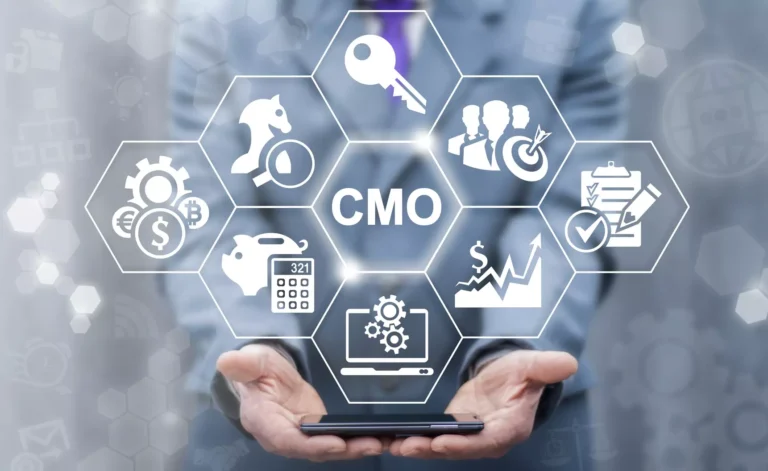Every business needs marketing to grow. The problem is many CEOs believe that their marketing isn’t working. To be fair, from the CEO’s perspective, it can really appear that way. Large investments are being made in marketing, but the returns weren’t as expected.
This creates a lot of frustration and fear in CEOs and CFOs, for good reason. If marketing isn’t producing enough quality leads, how will you grow or even sustain your business?
Thankfully, you can make changes to your marketing to change the outcome. If your marketing isn’t working, it is likely due to one (or more) of the following most common sources of poor marketing results.
1. You Don’t Have a Plan
For many businesses marketing has not been a top priority. Chances are your team is maintaining decisions made years ago because “it works” but no one is leading the strategy for your marketing strategy.
A successful marketing strategy isn’t blindly followed for years, it must be updated and challenged regularly. Because marketing deals directly with people, competitors, and third parties, things change rapidly. Your strategy should be adaptable to new market conditions.
In just the last couple of years, there have been major changes that forced many marketing teams to pivot on a dime. If you have an iPhone, you may remember in April 2021, iOS 14.5 was released. This was the update that gave users more control over their privacy. After the update was installed whenever an app was opened a pop-up appeared asking users if they wanted to “Ask App Not To Track.” This restricted the amount of data Facebook had for targeting which made Facebook and Instagram ads much less effective.
In May 2022, Google released its latest core update. Some marketing teams’ worst nightmares came true when the update hit their website. The update changed the way Google ranked content and it included a hard penalty for AI-written content. Organic traffic for teams using AI-generated content went from strong performance to nearly zero all at once.
An agile marketing strategy ensures that you’re not only reaching your target audience and your goals but also ensuring your marketing practice is balanced and can be adapted to whatever the market demands.
What can you do about it?
- If you have a marketing leader on your team, ask them to provide you with a marketing plan with KPIs to measure performance. This strategy is something that should be openly discussed on a regular basis through monthly performance reporting and at least an annual review to keep your team proactive on market changes.
- If you don’t have someone on your team, you can work with a marketing agency or consultant to develop a marketing plan and execute it.
2. You Don’t Know Your Audience
You can have the best product in the world, but if you’re trying to sell it to someone that doesn’t need it or want it, they aren’t going to buy it.
If you don’t know your audience and why they buy your product or service, chances are you’re paying to send your message to the wrong audience.
Many businesses are facing this issue due to the rapid changes in people and technology in the last several years. Not to mention a global pandemic that changed how we shop and behave.
All of these changes happening within people and technology, shift your audience and their expectations. For example, if you once served an older audience, you may be missing younger generations in your messaging, targeting, or both.
What can you do about it?
Identifying your core audience usually requires an investment in research and customer feedback. Use the following as a jumping-off point for your audience research.
- Market analysis – understanding the total addressable market
- Competitor analysis – understand the other players in the space and who they serve
- Brand audit – how if your brand is currently positioned in the market, your unique offering, and your current customers
- Customer feedback – who are your current customers and why do they buy from you
3. You’re Not Adapting to Your Customer’s Expectations
The changes in people and technology raised the bar on customers’ expectations. All shopping had to move online during the time of social distancing. Some brands really stepped up their game, creating exceptional customer experiences, which furthered this rise in expectations.
If you haven’t updated your website recently or paid much attention to your engagement, you need to evaluate your user’s experience to identify areas of improvement. Are there areas where the conversion path is broken or could be improved? Are there areas in the process that prevent a customer from moving forward or are just really annoying? These are things your team should be checking on a regular basis but usually fall off the radar as other to-dos and initiatives take precedence.
What can you do about it?
Assuming you know your audience already, evaluate your user experience by having you test these areas and assess your best path forward.
- Have multiple members of your team evaluate the user experience of your website, shopping functions, search functions, purchase, registration, etc.
- Have your team also evaluate your competitor’s website to identify areas you may be falling behind.
- Create a rubric for the items that need to be evaluated. This rubric should rate the severity of the issue, how complicated or difficult resolving the issue would be, and how much each issue is impacting sales and revenue.
- Assess next steps. With your rubric, decide what issues are of highest priority, what issues your team can resolve quickly, and whether a new website or experience needs to be developed.
4. You Aren’t Investing Enough Money
For any successful campaign, there are numerous inputs that need to be accounted for. The channels that the ad will run on, the creative elements for the ad, and the digital backend that makes the ad run as planned and sends leads to the right place. And that’s just running a campaign.
That doesn’t include the research and work needed to ensure that you’re targeting the right audience with a message that will resonate with them. If your marketing budget is tight, chances are you’re not getting the results you’re looking for.
For marketing to be successful, you have to understand who your target audience is and the psychological factors that lead them to make a purchase from your brand. In order to do that you must research to know who is buying your product and why to develop strategy and messaging to get in front of those people. If your marketing budget is too small, you’re likely working with data that hasn’t been confirmed for accuracy and campaigns that don’t perform well due to the lack of fund that could go into developing it.
What can you do about it?
- Evaluate your marketing budget
- Evaluate your in-house skill set – are there people on your team who can do the research
- Leverage outside sources – whether it’s an agency or freelancers helping with creative leverage external resources that can help you fill gaps and prioritize your spend
5. You Aren’t Diversifying Your Marketing Investments
Imagine your investment portfolio. Imagine that 75% of your investment is all in one stock and the remaining 25% is split among several smaller stocks that don’t produce much in the long run. Now let’s imagine for whatever reason, that stock that makes up most of your portfolio went to zero and you’re only left with the remaining 25% which hasn’t been giving you the returns you need.
Now let’s use that same example, but in context with your marketing budget. If you’re marketing investment is heavy in one single ad platform, you could be at serious risk of losing your lead flow in an instant. There have been many changes within ad platforms and Google search algorithms for SEO that can leave marketing teams scrambling to fix it.
An example from this year that many marketing teams faced came with Google’s Core Update in May 2022. Previous to this update Google’s Algorithm has been rewarding content production because if a website has a lot of rich content on a topic, Google can safely assume that they are an authority in the space and the traffic they pass to it will find what they are looking for. This led many companies to explore AI-generated content because the time and money needed to produce content through writers were too much. Those that invested in AI-generated content woke up to check their analytics after the core update only to discover that their once high-performing channel had plummeted to the ground.
Organic traffic in the tens of thousands of visitors per day dropped to next to nothing because Google determined that AI content was not in the best interest of the user making a search so they dropped page rankings on that content, taking them off of page one.
What can you do about it?
- Evaluate your marketing investment and ensure you’re not betting on one horse
- Stay up to date with changes in ad platforms and Google’s search engine
Marketing is a complex discipline. It deals entirely with people and psychology which makes it so challenging to get right. If you can get key areas right like who your target audience is and why they buy from you, you will be able to have more successful campaigns and initiatives moving forward.
If you’re unsure about why your marketing isn’t producing the results you want. Contact Bohu Digital. We can walk you through what is happening in your marketing today, what’s happening in the market, and create a path forward to provide you with high-quality lead generation and a balanced marketing portfolio.




























































































